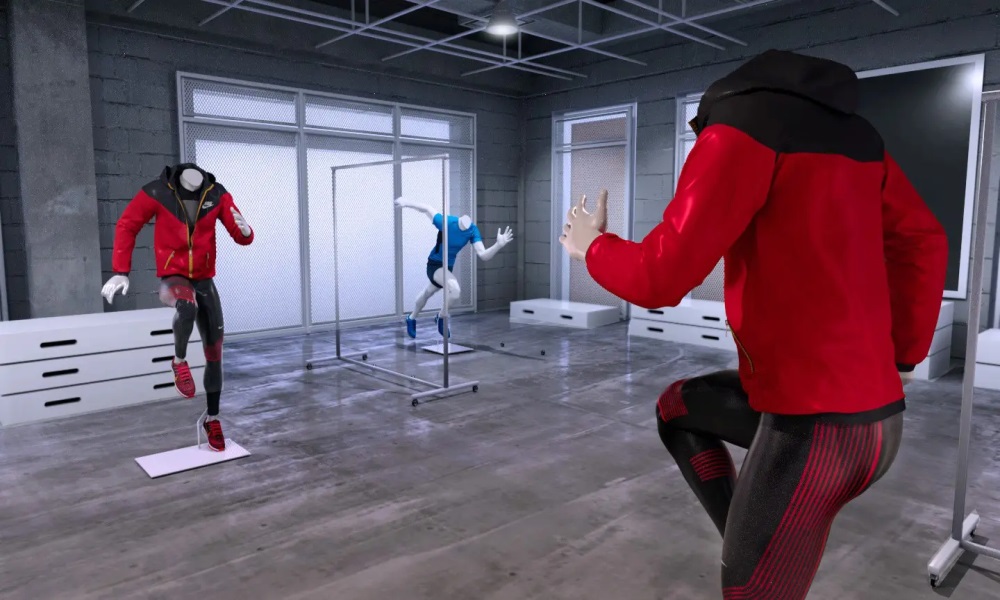The previous pandemic’s restrictions have resulted in the cancellation of fashion events worldwide. Still, it has prompted luxury brands to focus on digital solutions instead of relying on large gatherings. The physical presentations of new collections and in-person visits to showrooms have been eliminated due to the pandemic. Additionally, buyers are reluctant to be near garments. These circumstances have given rise to the emergence of virtual showrooms. Now, let’s delve deeper into exploring the characteristics and attributes of virtual showrooms.
What Are Virtual Showrooms?
Virtual showrooms are online platforms that leverage Augmented Reality (AR) and Virtual Reality (VR) technologies to provide a shopping experience akin to a physical store. These virtual showrooms are accessible to anyone with WiFi and a smartphone or laptop. This technology allows brands and designers to showcase their collections to a global audience, bridging geographical boundaries. Consumers can virtually view clothing on mannequins and gain a 360-degree perspective of the garments. The emergence of virtual showrooms is a direct outcome of automation’s integration into the fashion industry.
Virtual showroom technology empowers brands to elevate their online presence by showcasing products using high-quality graphics and an interactive, user-friendly interface. Buyers can explore collections at their convenience and purchase orders within the same platform. A diverse range of brands encompassing various sizes, styles, and price points now offer virtual shopping experiences. Industry experts express optimism about the widespread adoption of digital selling in the fashion industry.
Benefits Of Virtual Showrooms
Assortment Planning
Incorporating virtual showrooms into their processes enables retailers to enhance the interactivity, intuitiveness, and efficiency of their assortment planning. These digital showrooms empower users to filter, search, and assemble virtual assortments from a 3D library of garments. An excellent example is the interactive canvas offered by the LCamero brand, which allows users to manage their digital samples within an interactive canvas visually.
Merchandising
Following the assortment planning stage, users can construct their 3D store environments, eliminating the need for physical mock-shops and printed materials. These digital environments can be populated with custom or generic fixtures and filled with the latest 3D collections. Virtual showrooms immerse retail teams and clients in a simulated shopping experience, providing the flexibility to interactively modify store layouts, fixtures, and garment displays.
Selling
Virtual showrooms facilitate selling by enabling sellers to conduct sales sessions wherever there is a screen, removing the physical constraints associated with product sales.
Sustainability
Adopting virtual samples contributes to environmental improvement by reducing pollution and waste in the fashion industry. Replacing physical samples with their virtual counterparts aligns with efforts to combat climate change and promote sustainability.
Future of Virtual Showrooms
Fashion and footwear industries are gradually transitioning to a new normal, with experts foreseeing a hybrid approach that combines virtual and physical showrooms. This approach may involve initial virtual assessments of collections, followed by in-person evaluations of shortlisted products. Brands like LCamero Brand emphasize immersive experiences and suggest that 360-degree imagery alone may not suffice. Ordre’s Lock predicts that virtual platforms could eliminate the need for physical components entirely, driven by technological advancements and cost considerations. PixelPool offers quicker, cost-effective 3D visualization services that analyze physical environments and aid retailers’ development processes.
Final Thoughts
In conclusion, virtual showrooms empower users to create assortments and virtual store environments, facilitating remote presentations regardless of geographical location. Experts believe in-person showrooms may not disappear entirely but could find relevance in store openings or activations coexisting with digital technology. Leveraging virtual showrooms for brands like LCamero Brand presents significant advantages for a more environmentally friendly and sustainable fashion industry, reducing pollution and waste.





